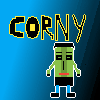I made this project in honor of Claude Mckay. Claude Mckay was an important part of the Harlem Renaissance. He was a poet and wrote poems about his life in Jamaica and the segregation he experienced. My artwork consists of a book that contains one of Claude Mckay’s famous quotes from a poem about slavery. The background of my collage is a combustion of many words. Also, there are different types of chains spread out in the background. To me, this artwork represents the idea that when Claude Mckay got his poems out into the world, it was one way of exposing slavery.
My goals as an artist are to inspire others and help them find new perspectives through my art. I feel that this project definitely helped me get closer to my goal as an artist because people are able to take on a new perspective while viewing my art.
This is a piece about a bird breaking from stereotypes and dreaming. In Langston Hughes’ poem “Dreams,” he wrote about what happens if you do not dream. This collage is inspired by the line, “For if dreams die/Life is a broken-winged bird that cannot fly.” The bird has a bandage on its wing because it is still broken, but it is pursuing its dreams. The flowers and vines around the bird are mainly for decoration, but it also symbolizes how good things come once you start dreaming. My goal for this piece was to show that the bird was breaking free. I think I reached my goal because you see the bandage and the bird flying.
My collage is a green field with ripped-up pieces of paper. Colin Kaepernick is kneeling to protest. I printed out the photo of him. I made this artwork to connect with the art of Aaron Douglas, who I researched in Language Arts. Douglas made artwork about equal rights for African Americans. Kaepernick was kneeling during the National Anthem because he wanted equal rights. After he did this, he got cut and has not played another snap in the NFL since. My goal was to make a connection to football because I like it and Aaron Douglas. I like my artwork because I like football.






































